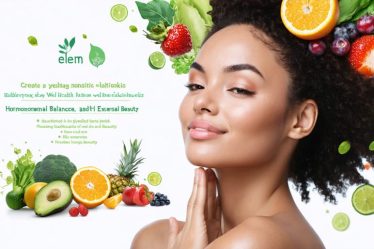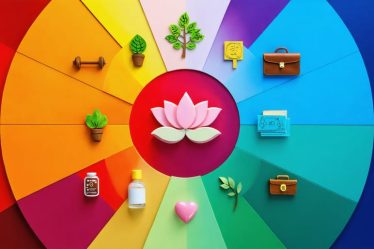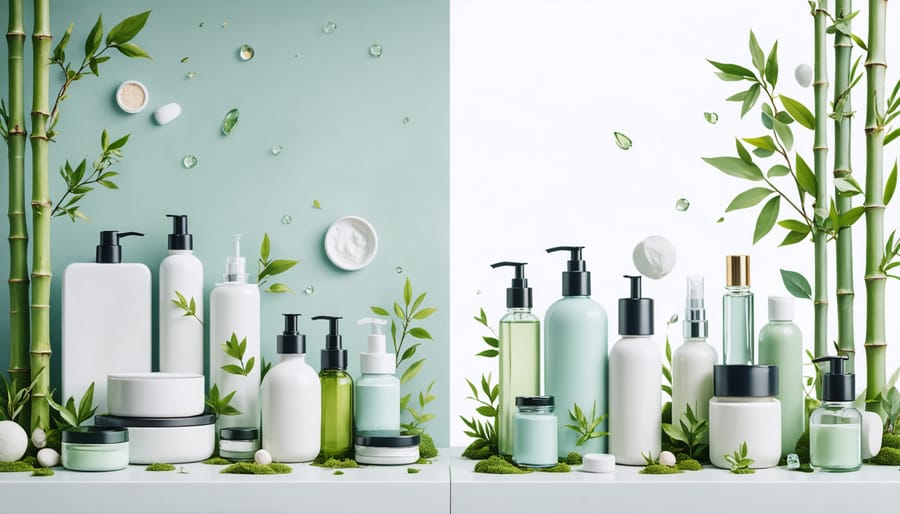
Transform your beauty routine into an eco-conscious ritual that nurtures both your skin and the planet. The beauty industry generates over 120 billion packaging units annually, but a growing movement of sustainable beauty brands is revolutionizing how we approach self-care. From plastic-free packaging to ethically sourced ingredients, eco-friendly beauty products offer a powerful way to reduce our environmental footprint without compromising on quality or effectiveness.
As someone who made the switch to sustainable beauty five years ago, I’ve witnessed firsthand how these mindful choices create rippling effects beyond just our appearance. Today’s eco-friendly beauty products combine cutting-edge green science with time-tested natural ingredients, delivering results that match or exceed their conventional counterparts. Whether you’re taking your first steps toward sustainable beauty or looking to expand your existing clean routine, this guide will help you navigate the world of planet-friendly products with confidence.
Join me as we explore the innovative brands, game-changing ingredients, and simple swaps that make sustainable beauty accessible and enjoyable for everyone. Your journey to a more conscious beauty routine starts here, and every small change makes a meaningful difference for our planet’s future.
The Hidden Cost of Conventional Beauty Products
Environmental Impact
The beauty industry’s environmental footprint might surprise you – I know it shocked me when I first learned about it! Each year, the cosmetics industry produces over 120 billion units of packaging, much of which ends up in our landfills and oceans. But it’s not just about the bottles and tubes we toss away.
Many conventional beauty products contain microplastics – those tiny beads in your favorite scrub that seem harmless but actually end up polluting our waterways and harming marine life. And let’s talk about those chemical ingredients we can barely pronounce – they don’t just disappear after washing our faces. These substances often find their way into our water systems, affecting ecosystems and wildlife.
The good news? We’re seeing a wonderful shift in the industry! More brands are embracing sustainable packaging solutions like recyclable materials, refillable containers, and even package-free options. They’re also replacing harmful microbeads with natural alternatives like ground coffee beans or bamboo powder. By choosing eco-friendly beauty products, we’re not just taking care of our skin – we’re showing love to our planet too.
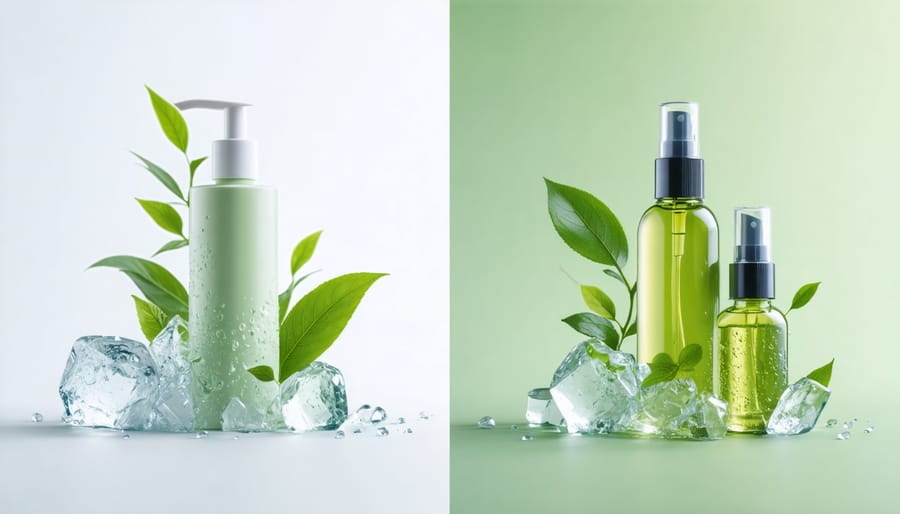
Health Concerns
While many of us pay attention to what we eat, we often overlook the potentially harmful ingredients lurking in our everyday beauty products. The hidden dangers in conventional beauty products can have serious implications for both our health and the environment.
Common concerning ingredients include parabens, which are preservatives linked to hormone disruption, and phthalates, often found in fragrances and known to affect reproductive health. Synthetic fragrances, labeled simply as “parfum” or “fragrance,” can contain hundreds of undisclosed chemicals that may trigger allergies or sensitivities.
Another red flag is the presence of sulfates (like SLS and SLES), which can strip the skin of its natural oils and cause irritation. Formaldehyde-releasing preservatives, still found in many conventional products, are known carcinogens that can also cause skin sensitization.
These ingredients don’t just affect our bodies – they also make their way into our waterways and ecosystem when we wash them off. By choosing eco-friendly alternatives, we’re not only protecting our health but also contributing to a healthier planet.
What Makes Beauty Products Truly Eco-Friendly?
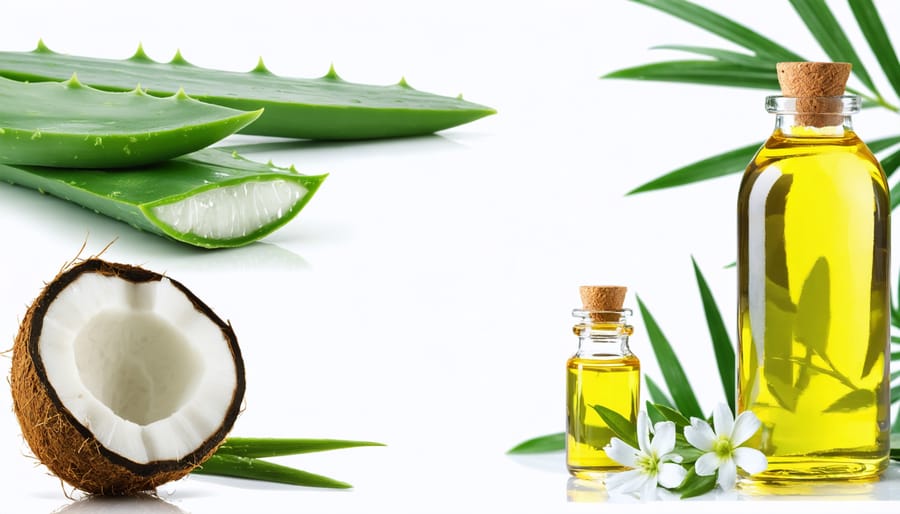
Sustainable Ingredients
When it comes to eco-friendly beauty products, the magic lies in their carefully selected sustainable ingredients. As someone who’s embraced a holistic approach to skincare, I’ve discovered that nature offers incredible alternatives to synthetic ingredients.
Let’s explore some star players in the sustainable beauty game. Organic aloe vera, a personal favorite, not only soothes and hydrates but also comes in biodegradable packaging that won’t harm our oceans. Cold-pressed plant oils like jojoba and argan work wonders while supporting sustainable farming practices. These ingredients are harvested with minimal environmental impact and often support local communities.
Many brands are now incorporating upcycled ingredients – think coffee grounds from local cafes transformed into exfoliants, or discarded fruit seeds pressed into nourishing oils. I love how this approach not only reduces waste but also delivers powerful skincare benefits.
Look for products containing biodegradable ingredients like coconut-derived surfactants instead of harsh sulfates, and natural preservatives such as radish root ferment filtrate rather than parabens. These alternatives are gentler on both your skin and our planet, breaking down harmlessly when they return to the environment.
The best part? These sustainable ingredients often come with multiple benefits – they’re typically gentler on sensitive skin, packed with nutrients, and free from harmful chemicals. Plus, they’re usually sourced through fair-trade practices, making your beauty routine not just eco-friendly but socially conscious too.
Responsible Packaging
As a beauty enthusiast who’s been on my own sustainability journey, I’ve learned that what’s on the outside of our products matters just as much as what’s inside. Today’s eco-conscious beauty brands are revolutionizing packaging with exciting alternatives that minimize environmental impact while maintaining that luxurious feel we all love.
Gone are the days of excessive plastic wrapping and bulky containers. Many brands now embrace minimalist packaging using recycled materials, from post-consumer glass to aluminum tubes that can be endlessly recycled. I’ve fallen in love with shampoo bars that come in simple cardboard boxes and facial serums in beautiful refillable glass bottles.
Biodegradable packaging is another game-changer. From bamboo containers to sugar cane-derived tubes, these materials break down naturally without harming our ecosystems. Some innovative brands even embed seeds in their packaging – imagine your empty moisturizer container growing into wildflowers!
When shopping for eco-friendly beauty products, look for:
– Packaging made from recycled materials
– Items marked as “recyclable” or “biodegradable”
– Products with minimal or no outer packaging
– Refillable options
– Glass or aluminum containers instead of plastic
Remember, even small changes make a difference. Start by choosing one product with sustainable packaging, then gradually transition your entire beauty routine. Your vanity will look more stylish, and you’ll feel good knowing you’re contributing to a cleaner planet.
My Favorite Eco-Friendly Beauty Swaps
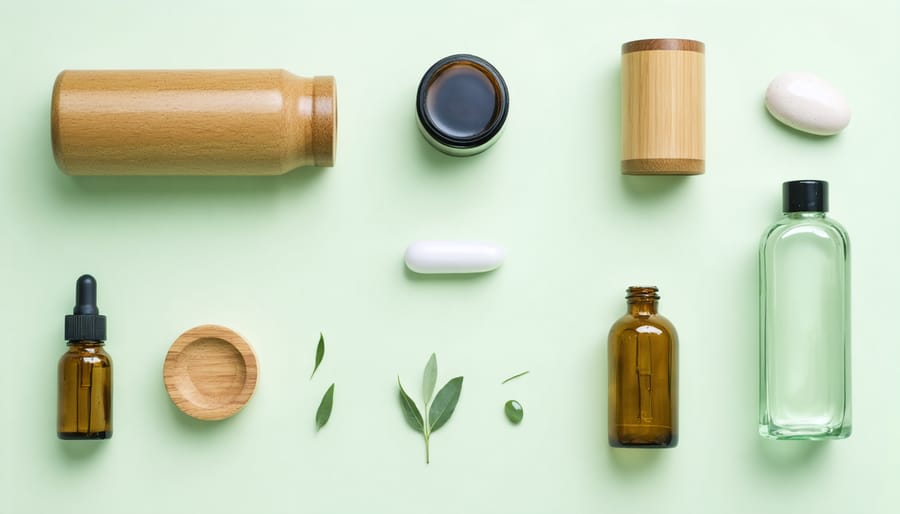
Skincare Essentials
Making the switch to eco-friendly skincare doesn’t mean compromising on effectiveness. As someone who’s been on this journey, I’ve discovered that creating a personalized skincare routine with natural products can actually deliver better results than conventional alternatives.
Start your day with a gentle cleanser made from ingredients like coconut oil or chamomile. I’ve found that raw honey makes an amazing natural face wash – it’s antibacterial and leaves skin incredibly soft. For toning, apple cider vinegar diluted with water works wonders in balancing skin pH levels.
When it comes to moisturizing, organic oils are your best friends. Jojoba oil closely mimics our skin’s natural sebum, while rosehip oil is packed with vitamin C and essential fatty acids. For those concerned about aging, bakuchiol is a plant-based alternative to retinol that’s gentler on sensitive skin.
Don’t forget about exfoliation! Mix ground oats with a bit of honey and yogurt for a gentle yet effective scrub. For face masks, bentonite clay mixed with rose water can help detoxify and brighten your complexion.
Remember to store your natural products in dark glass containers and keep them in a cool, dry place to maintain their effectiveness. While transitioning to natural alternatives might take some time, your skin (and the planet) will thank you for making the switch.
Makeup Must-Haves
Let’s talk about the game-changers in eco-friendly makeup that actually deliver results! After trying countless products, I’ve found some absolute gems that prove you don’t have to compromise performance for sustainability.
First up, mascaras have come a long way in the natural beauty world. Look for ones housed in glass tubes or recyclable packaging, containing ingredients like plant-based waxes and organic oils. My current favorite gives me full, fluttery lashes while being completely biodegradable.
For foundation, cream-based products in recyclable glass jars are your best bet. Many eco-friendly brands now offer buildable coverage using natural minerals and organic ingredients. These not only look beautiful on the skin but also eliminate the need for plastic packaging.
When it comes to lipsticks, opt for products in cardboard tubes or refillable metal cases. The latest formulations featuring plant-based oils and natural pigments rival traditional brands in terms of staying power and color payoff.
Don’t forget about tools! Bamboo makeup brushes and biodegradable beauty sponges are excellent alternatives to synthetic options. I’ve found they actually blend products better while being gentler on the environment.
Pro tip: Look for brands that offer refill programs or take-back initiatives for their packaging. This small step can significantly reduce your beauty routine’s environmental impact while still maintaining that polished look we all love.
Hair and Body Care
When it comes to hair and body care, making eco-friendly choices doesn’t mean compromising on quality. I’ve discovered some amazing sustainable alternatives that have transformed my daily routine. Solid shampoo bars have become a game-changer – they eliminate plastic packaging and typically last longer than liquid shampoos. Plus, they’re perfect for travel!
For body care, natural loofahs and biodegradable body scrubs have replaced my plastic-heavy alternatives. I’m particularly excited about the rise of refill stations in local shops, where you can bring your own containers to stock up on natural body wash and lotions. These solutions not only reduce waste but often contain more nourishing ingredients for your skin.
Look for products with certified organic ingredients and minimal packaging. Many brands now offer bamboo toothbrushes, plastic-free deodorants, and zero-waste body butter bars. I’ve found that reading ingredient lists carefully helps avoid harmful chemicals like parabens and synthetic fragrances, which can be harsh on both your body and the environment.
One of my favorite discoveries has been multi-purpose products, like coconut oil, which works brilliantly as both a hair mask and body moisturizer. These versatile items not only reduce bathroom clutter but also minimize our environmental impact. Remember, transitioning to eco-friendly alternatives doesn’t have to happen overnight – start with one product at a time and build from there.
Making the Switch: Practical Tips
Budget-Friendly Options
Making the switch to eco-friendly beauty doesn’t have to break the bank! I’ve discovered several budget-friendly alternatives that are just as effective as their high-end counterparts. One of my favorite money-saving tricks is using coconut oil as a multipurpose beauty product – it works wonderfully as a makeup remover, hair mask, and body moisturizer.
DIY solutions can significantly cut costs while being environmentally conscious. Try mixing honey with brown sugar for a natural exfoliant, or create a hydrating face mask using mashed avocado and oatmeal. These kitchen ingredients are both affordable and completely biodegradable!
Many drugstore brands are now offering eco-friendly lines at accessible price points. Look for products with minimal packaging, recyclable containers, and natural ingredients. Brands like EcoTools provide sustainable beauty tools under $15, while companies like Burt’s Bees offer natural skincare options at drugstore prices.
Shopping during sales, subscribing to brand newsletters for discounts, and buying in bulk when possible can help make sustainable beauty more affordable. Remember, transitioning to eco-friendly products doesn’t need to happen all at once – start with one or two items and gradually build your collection as your budget allows.
Where to Shop
Finding reliable sources for sustainable beauty products has never been easier. Major retailers like Sephora and Ulta now feature dedicated clean beauty sections, making it simple to discover eco-friendly beauty brands while shopping. For a more curated experience, try specialty stores like Credo Beauty, The Detox Market, and Follain, which carefully vet their products for both effectiveness and environmental impact.
Don’t overlook local health food stores and farmers’ markets, which often stock small-batch, locally-made natural beauty products. Online marketplaces like EcoRoots and Package Free Shop offer plastic-free alternatives and zero-waste options, perfect for minimizing your environmental footprint.
I’ve had great success shopping directly from brand websites like Beautycounter, Juice Beauty, and RMS Beauty. These companies often provide detailed information about their sustainability practices and ingredients, plus you might find exclusive deals and loyalty programs not available elsewhere. Remember to sign up for newsletters from your favorite retailers to stay informed about new product launches and special offers in the eco-beauty space.
Making the switch to eco-friendly beauty products isn’t just a trend – it’s a meaningful step toward a more sustainable and healthier lifestyle. As someone who made this transition myself, I can tell you that the benefits extend far beyond the immediate satisfaction of using clean, natural products.
By choosing eco-friendly beauty alternatives, you’re investing in your long-term health while contributing to environmental preservation. These products typically contain fewer harmful chemicals, reducing your exposure to potentially dangerous ingredients over time. Many users, myself included, notice improved skin health and fewer sensitivities after making the switch.
The environmental impact is equally significant. Every eco-friendly product you choose helps reduce plastic waste, minimize chemical runoff in our waterways, and support sustainable farming practices. Plus, as more consumers embrace these products, we’re sending a clear message to the beauty industry that sustainability matters.
Remember, transitioning to eco-friendly beauty doesn’t have to happen overnight. Start with one or two products and gradually build your collection. You’ll likely find that these natural alternatives work just as effectively as conventional products, if not better. The peace of mind that comes from knowing you’re making choices that benefit both your well-being and the planet is truly priceless.
Join our growing community of conscious consumers who are reshaping the beauty industry one purchase at a time. Your skin – and our planet – will thank you for it.


